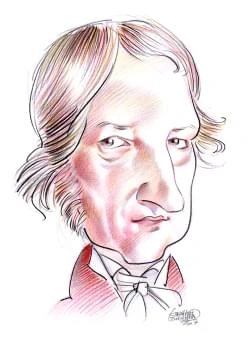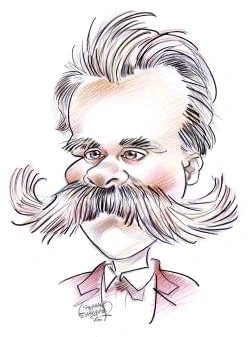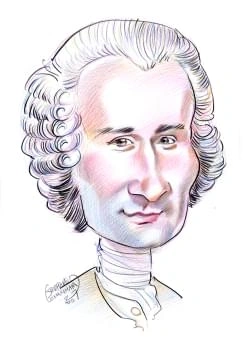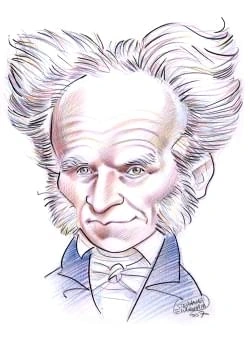19 résultats pour "cherokees"
-
Cherokee.
The old ways, including traditional crafts, are most strongly preserved by the Eastern Band, some of whom continue to live on the Qualla Reservation in North Carolina.The quality of North Carolina Cherokee basketry is considered to be equal to or better than that of earlier times. Farming, forestry, factory work, and tourism (about 5million tourists annually) are sources of income for eastern Cherokee. In 1984 the Cherokee Nation of Oklahoma and the Eastern Band of Cherokee Indians met in a join...
-
Cherokees - anthropologie.
l'ouest de la tribu, la « Bande cherokee » fut vendue aux États-Unis. En 1893 elle fut ouverte principalement aux colons européens, lors d'une célèbre course à la terre. 3 CULTURE Lances cherokee L'« emmanchement » est la technique qui consiste à attacher une pointe de projectile (d'une flèche par exemple) sur une lance. La base des pointes métalliques de ces lances d'indiens Cherokeeest introduite jusqu'aux extrémités des fentes des manches en bois. Elle est ensuite maintenue à l'aide d'une la...
- Cherokee - analyse de l'oeuvre.
-
Native American Literature.
Many Native American writers of the 19th century wrote histories of their tribes. One tribal historian was David Cusick (Tuscarora), whose Sketches of Ancient History of the Six Nations (1827) was the first published tribal history. Tribal histories explained the deep ties that tribes had to their ancestral homelands. Beginning in the 18th century, these ties took on special meaning because the United States government began removing Native Americans from their traditional lands. These removal...
-
Native American Literature
I
INTRODUCTION
Leslie Marmon Silko
Native American writer Leslie Marmon Silko is perhaps best known for her first novel, Ceremony (1977), a coming-of-age
story about a young man of mixed Native American and white ancestry.
SequoyahNative Americans did not use a complex written language before the immigration of Europeans to the Americas. In theearly 1820s the Cherokee leader Sequoyah developed an alphabet and written language for his native tongue. ManyCherokee learned the new written language readily, and in 1828 they published the first Native American newspaper,written in both Cherokee and English.THE BETTMANN ARCHIVE Before Native Americans came into contact with Europeans, many tribes supplemented the spoken...
-
Native American Policy.
of white settlement dominated policy during the second quarter of the 19th century. IV REMOVAL PERIOD The idea of moving Native Americans to a different part of the country was not new. After the Louisiana Purchase in 1803, President Thomas Jefferson had suggestedthat tracts of land in this vast new territory could be given to native peoples if they agreed to cede their lands in the eastern part of the country. Transfers occurred in apiecemeal way, but no consistent removal program developed u...
-
Native American Languages.
From Nahuatl, spoken in Middle America, come avocado, cacao, cocoa, chile/chili, chocolate, coyote, tamale , tomato , and many others. Contributions from South American languages include jaguar, cashew, tapioca, and toucan from Tupinambá; alpaca, condor, jerky, llama, puma, and quinine from Quechua; and barbecue, canoe, guava, hammock, hurricane, iguana, maize, papaya, and potato from Maipurean (Arawakan). Native American languages, in turn, have borrowed words from European language...
-
Alabama (state) - geography.
indentations along the coast are measured, the state’s shoreline is 977 km (607 mi) long. It includes the shores of Mobile Bay, an inlet 56 km (35 mi) long at the mouthof the Mobile River. Barrier beaches partly block the entrance to the bay, leaving narrow openings on either side of Dauphin Island. Dauphin and other islands alongAlabama’s coast west of Mobile Bay are separated from the mainland by Mississippi Sound. D Climate Alabama has a humid subtropical climate, with short, relatively mild...
-
-
Alabama (state) - USA History.
indentations along the coast are measured, the state’s shoreline is 977 km (607 mi) long. It includes the shores of Mobile Bay, an inlet 56 km (35 mi) long at the mouthof the Mobile River. Barrier beaches partly block the entrance to the bay, leaving narrow openings on either side of Dauphin Island. Dauphin and other islands alongAlabama’s coast west of Mobile Bay are separated from the mainland by Mississippi Sound. D Climate Alabama has a humid subtropical climate, with short, relatively mild...
-
Tennessee (state) - geography.
The climate of Tennessee is characterized by hot summers, mild winters, and abundant rainfall. C1 Temperature Average July temperatures range from less than 21° C (70° F) in the Blue Ridge region to 27° C (80° F) at Nashville and Memphis. Maximum daytime temperatures insummer often rise above 35° C (95° F) in central and western Tennessee. Daytime temperatures in the mountains rarely rise above 32° C (90° F). Summer nights tendto be warm and muggy in central and western Tennessee, but temperatu...
-
Tennessee (state) - USA History.
The climate of Tennessee is characterized by hot summers, mild winters, and abundant rainfall. C1 Temperature Average July temperatures range from less than 21° C (70° F) in the Blue Ridge region to 27° C (80° F) at Nashville and Memphis. Maximum daytime temperatures insummer often rise above 35° C (95° F) in central and western Tennessee. Daytime temperatures in the mountains rarely rise above 32° C (90° F). Summer nights tendto be warm and muggy in central and western Tennessee, but temperatu...
-
Indianerkriege - Geschichte.
Einige Stämme lehnten die Umsiedelung ab, woraufhin erneut Kriege ausbrachen. Die Versuche der Stämme der Sauk und der Fox, Anfang 1832 in ihre Heimatgebietezurückzukehren, endeten im Black-Hawk-Krieg in Illinois und Wisconsin und im Bad-Axe-Massaker vom 3. August 1832, in dem die meisten Indianer ermordet wurden, alssie gerade über den Mississippi nach Iowa ziehen wollten. Gleichzeitig wurden die Cherokee aus Georgia und die restlichen Creek aus Mississippi und Alabama vertrieben.Im zweiten Sem...
-
Oklahoma - geography.
portion and the Panhandle are classified as a steppe, where precipitation, typically 250 to 500 mm (10 to 20 in), is the controlling characteristic. January is usually the coldest month with an average of about 3°C (38°F) and extremes from -33°C (-27°F), the lowest ever recorded, to 33°C (92°F). Summer arelong and hot with temperatures in the upper 30°s C (lower 100°s F) common from May until September across the state. The growing season varies from less than 180days in the western Panhandle to...
-
Oklahoma - USA History.
portion and the Panhandle are classified as a steppe, where precipitation, typically 250 to 500 mm (10 to 20 in), is the controlling characteristic. January is usually the coldest month with an average of about 3°C (38°F) and extremes from -33°C (-27°F), the lowest ever recorded, to 33°C (92°F). Summer arelong and hot with temperatures in the upper 30°s C (lower 100°s F) common from May until September across the state. The growing season varies from less than 180days in the western Panhandle to...
-
Georgia (state) - geography.
B Rivers and Lakes Most of the rivers of Georgia drain eastward to the Atlantic Ocean proper or southward to the Gulf of Mexico. Only a few flow northward to the Tennessee River, which isa major tributary of the Mississippi River. Most of the rivers flowing to the coasts are navigable by barges and small craft as far upstream as the Fall Line. The major river flowing to the Atlantic is the Savannah River, which, with the Tugaloo River, one of its headwaters, forms most of the state’s eastern bo...
-
Georgia (state) - USA History.
B Rivers and Lakes Most of the rivers of Georgia drain eastward to the Atlantic Ocean proper or southward to the Gulf of Mexico. Only a few flow northward to the Tennessee River, which isa major tributary of the Mississippi River. Most of the rivers flowing to the coasts are navigable by barges and small craft as far upstream as the Fall Line. The major river flowing to the Atlantic is the Savannah River, which, with the Tugaloo River, one of its headwaters, forms most of the state’s eastern bo...
-
-
American Westward Movement - U.
British expansion. However, Native Americans of the Great Lakes and Ohio Valley lashed out against the English in an attempt to preserve their independence, theirland, and their way of life. With the Ottawa chief Pontiac as their most visible leader, the tribes waged a bloody and costly war. As a result, the British governmentdecided to keep the white settlers apart from the Native Americans. It issued the Royal Proclamation of 1763, banning all white settlement beyond the Appalachians andstatin...
-
Native Americans of North America.
addition to smallpox and measles, explorers and colonists brought a host of other diseases: bubonic plague, cholera, typhoid fever, scarlet fever, pleurisy, mumps,diphtheria, pneumonia, whooping cough, malaria, yellow fever, and various sexually transmitted infections. Despite the undisputed devastation wreaked on Indian populations after European contact, native populations showed enormous regional variability in their response todisease exposure. Some peoples survived and, in some cases, even...
-
Native Americans of North America - Canadian History.
addition to smallpox and measles, explorers and colonists brought a host of other diseases: bubonic plague, cholera, typhoid fever, scarlet fever, pleurisy, mumps,diphtheria, pneumonia, whooping cough, malaria, yellow fever, and various sexually transmitted infections. Despite the undisputed devastation wreaked on Indian populations after European contact, native populations showed enormous regional variability in their response todisease exposure. Some peoples survived and, in some cases, even...
}})








